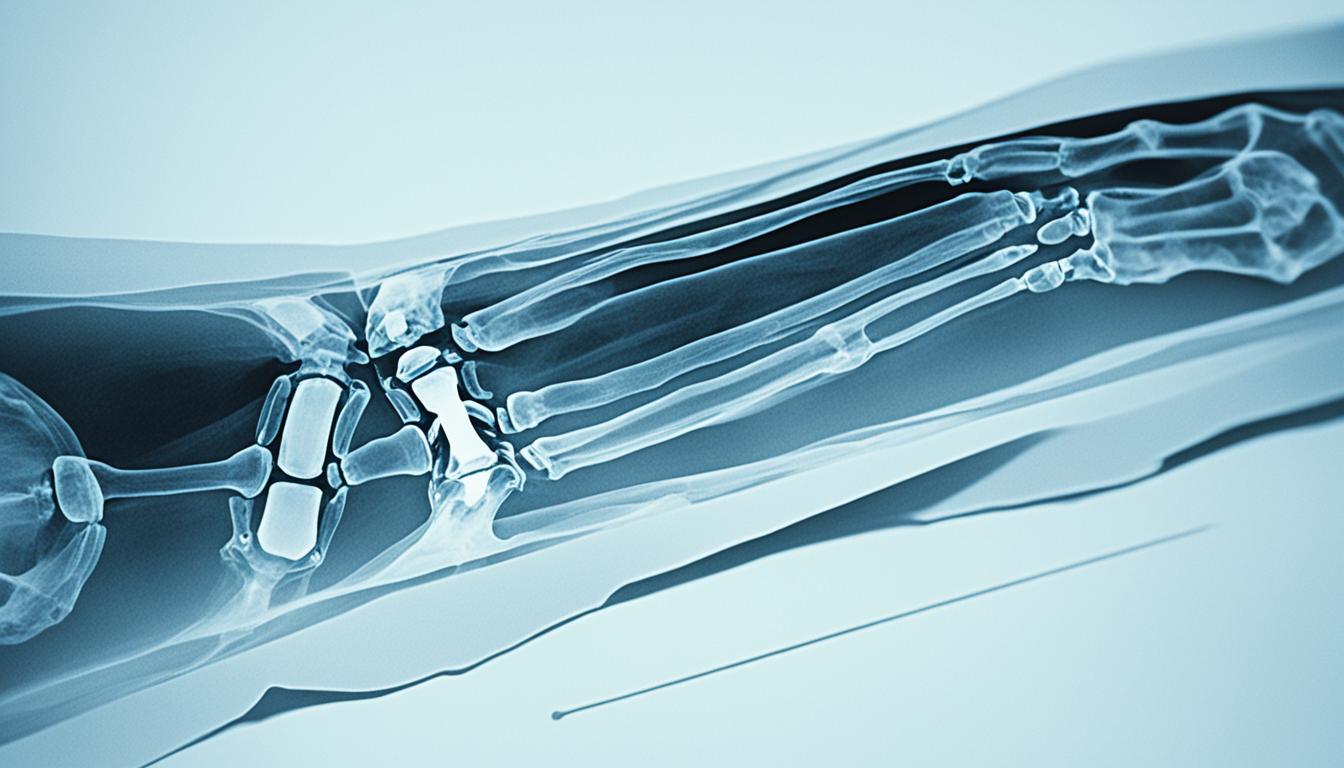A fracture arm is when one of the arm bones cracks or breaks. This often comes from a strong force, like a fall. It can also be because of conditions like osteoporosis or bone cancer.
Arm fractures come in different types. Closed fractures may happen without the bone breaking the skin. Compound fractures happen when the bone sticks out through the skin. Avulsion fractures are when a piece of bone chips off because of a tendon pull. Fractures can also be comminuted, breaking into many pieces, or be stress fractures due to too much repetitive stress.
People with a fractured arm feel pain, notice swelling, see bruises, and find it hard to move the arm. The bone could also make a grating feeling if the broken parts rub together. The seriousness of these symptoms depends on the fracture type and where it is in the arm.
To diagnose a fractured arm, a doctor will check for soreness, swelling, or standing out bones. They’ll often use X-rays or similar scans to see the fracture better and check for other damages.
The main treatment for a fractured arm is to put the bone back in place and not let it move. Doctors do this with casts, braces, or sometimes surgery. How long it takes to heal depends on the fracture.
But, sometimes the healing doesn’t go smoothly. The bone might not line up correctly, causing problems. Infections can also slow healing down, making it more painful.
Key Takeaways:
- A fracture arm is a crack or break in an arm bone, often from hard hits or medical conditions.
- Fractured arm symptoms include pain, swelling, and difficulty moving the arm.
- Doctors diagnose with exams and imaging tests like X-rays.
- Treatments include keeping the arm still with casts or, in severe cases, surgery.
- Complications like malalignment, bone infections, or slow healing can happen.
Stem Cell Therapy for Fracture Arm Recovery
Stem cell therapy helps fractured arms heal faster. Traditional treatments like casts or surgery have limits. Stem cells speed up healing and make arms work better.
These cells come from different places like bone marrow and umbilical cord blood. They help heal bones and tissues. Stem cells turn into bone cells and stimulate others to help with healing.
Studies show stem cells boost healing and lower the chance of problems. Now, clinical trials are looking into this more. Stem cell treatment could change how we heal arm fractures in the future.
Doctors are also studying how well stem cells work with other methods. They’re looking at using growth factors and special materials too. Combining treatments could make healing even faster and better.
Treatment Considerations and Potential Benefits
Thinking about stem cell therapy? Talk with a regenerative medicine expert. They’ll check what’s best for you and keep you safe.
Here are some benefits of stem cell therapy for arm fractures:
- Faster bone healing and tissue regrowth
- Less chance of healing problems
- Better blood flow and more healing cells
- Improved arm use and movement
Stem cell therapy keeps getting better for treating arm fractures. But, it’s still new and needs more research. We need to know if it’s safe and works well for the long term.
Conclusion
Fracture arm disease is common and can greatly change someone’s mobility and life’s quality. It’s key to know the symptoms, causes, and how to diagnose fractures for quick, efficient care. Methods like using a cast or surgery are usually how a broken arm is treated. But, there’s new hope in regenerative medicine, specifically stem cell therapy. This kind of treatment may speed up healing and make the arm work better again. Stem cells could mean less danger and help you get better faster from a fractured arm. Still, more studies are essential to prove if treating broken arms with stem cells is truly effective and safe.

